Cover
ERB Legend Yves Carbonne – Bass Musician Magazine, December 2016 Issue
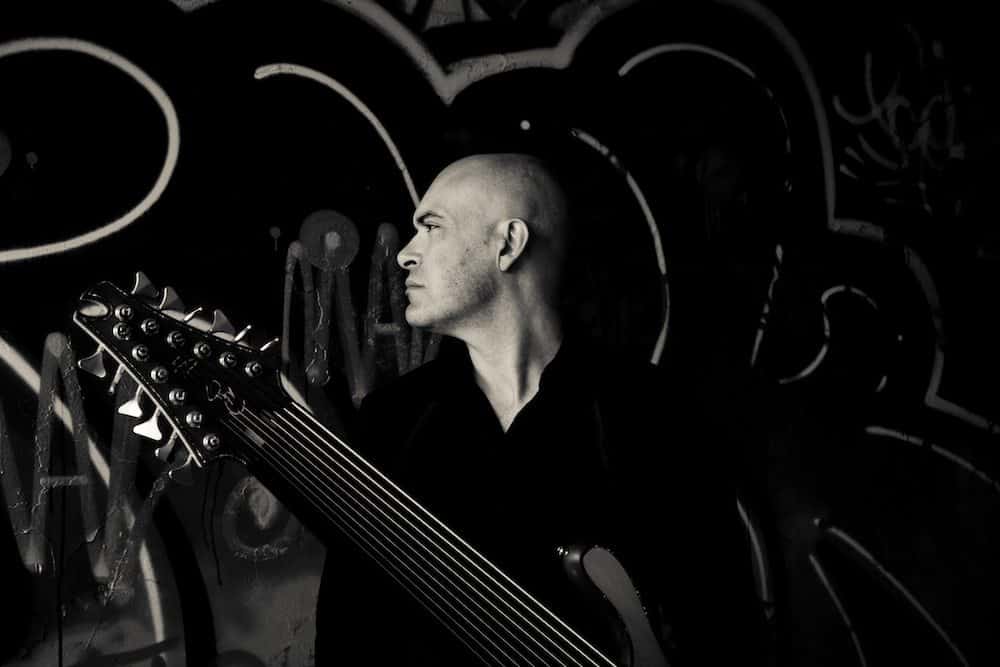

Photo, Philippe Lissart
ERB Legend Yves Carbonne
Well-known for his beautiful tone and his spectacular Jerzy Drozd 12-String ERB, French bassist Yves Carbonne is perhaps the only player in this special edition that has dedicated his whole career almost exclusively to the fretless ERB. He also has a different ERB concept, which he calls “sub-bass”. Yves has been playing ERBs since 2003 and after 13 years dedicated to this instrument, he has many experiences to share with BMM readers…
Please tell us about your musical background and that crucial moment when you decided to move into the ERB field.
I started playing music by studying classical piano when I was 7 back in 1974. Then at 13, I started playing the electric bass as an autodidact. At 15, I took some private lessons in Bordeaux (France) with Jack Tocah, a local bass player. At this time, encouraged by my teacher to be creative, I was already playing a fretless 5-string with high C. At 17, I got some lessons in Paris from Tony Ballester and Laurent Cokelaere. Later, my teachers were Alain Caron and Dominique Di Piazza.
My professional career as a musician began at 17. Most of my gigs were jazz gigs. I did tour with some of the most important European jazz musicians like Bernard Lubat, who influenced my taste for improvisation. By the age of 20, I was playing a fretless 6-string as my main instrument.
I was (and I’m still) very interested in original sounds and lutherie, so in the nineties I started working with Luthiers to develop some personal ideas regarding instruments. My collaboration with Christian Noguera started in 1998 and with Jerzy Drozd, in 2005.
In 2002, I wanted to try new directions and I tried tuning a 4-string one octave lower than standard tuning, with the help of La Bella Strings. I call this concept “sub-bass”. For me, it makes more sense than using F# and C# strings because it allows me to play with guitarists and/or bassists using the same fingerings and open strings; it sounds better, more powerful. In fact, it follows the same logic as the organization of string instruments in the symphonic orchestra: the cello is tuned one octave below the viola, and the low C on the 5-string contrabass is tuned one octave below the low C on the cello. I think that the full octave below regular basses (including 5 and 6-string) is fully usable because technology is evolving in this direction; lower and clearer. For instance, iPhones and iPads pass 20 Hz.
In 2003, I got my Noguera 8-string sub-bass and the fretless version in 2004. This is the instrument I use for my song “Holy Spirit”. Jerzy made my fretless 10-string in 2006 and my first fretless 12-string in 2007.
What would you say to all those ERB haters around?
In 2015, I asked myself about how many strings I would need for playing bass and only “bass,” which means assuming the bass role in a band. My conclusion is that with 2 strings I could probably play at least 95% of all the songs a bass player will ever have to play during his musical life. Jon Letts got amused with my posts on Facebook about the 2-string bass and proposed to make me one. It is a great instrument, perfect for playing groove. It confirms that the less strings you have on an instrument, the easier you can get a big sound. I took the time to learn and record “Donna Lee” (Miles Davis/Charlie Parker) with it to show that you can do a lot with only 2 strings. That is perfect for developing horizontal playing, which I think is a crucial point to acquire a great technique. So if someone dares telling me that I have, “Too many strings,” I reply, “You have too many strings, too!” and show him a video with the 2-string.
In your opinion, what are the benefits and downsides of playing with an ERB?
I play 2, 4, 6, 8, 10 & 12-string instruments because they all have a distinct voice and range. I mostly use the 8, 10 & 12 for my own music. I love them because they extend my fretless voice to the range of the biggest piano (Bösendorfer Imperial – 8 octaves, including additional black keys) and they are great tools for composing my music. Those instruments are not easy to play, some would stupidly think they are fancy but actually they are not. They require a lot of work, particularly for intonation as well as perfect physical condition, which is a very good thing because it forces me to always stay in shape.
How do you take care of the string-muting and string-spacing issues?
I mute the strings with both hands. My standard string spacing is 20 mm (for 4, 6 and 8-string instruments), but on the 10 it is 18 mm and on the 12, 17 mm. I made sure that I could mute all the strings on all my instruments with the width of my hands before they were built.
Please tell us how your extended range bass has evolved through the years.
2003: 8-string Noguera sub-bass
2004: fretless 8-string semi-acoustic Noguera sub-bass #1
2006: fretless 10-string semi-acoustic Jerzy Drozd sub-bass; fretless 8-string semi-acoustic Noguera sub-bass #2
2007: fretless 12-string semi-acoustic Jerzy Drozd sub-bass #1
2011: fretless 12-string semi-acoustic Jerzy Drozd sub-bass #2
I’m currently waiting for my new fretless 12-string semi-acoustic Jerzy Drozd sub-bass (#3): this instrument will be the most acoustic and the most spectacular version of all my fretless ERBs, including a feature never seen before on a bass guitar.

Please tell us about the evolution your ERB playing technique has experienced through the years.
Since I started playing those instruments (2003), I like to use the potential of the lower octave; the lowest note on my 12-string is a B00, one octave below regular low B on a 5 or a 6. This string is a .266 made by Kalium Strings. I had to develop a cleaner articulation for both hands than what I had because the mass of those big strings can be very noisy if it is not correctly moved. It has to do with the frequencies: for example, 20 Hz means that the string is moving 20 times per second; so the string has some inertia, it moves slowly and must be handled with care. I also developed my chords and melodies techniques. Finally, I developed the use of those ERBs as full-range instruments. All that gives me a lot of possibilities and endless work for the rest of my life. I love that!
The evolution of my technique is that with time I get less confused switching from an instrument to another one. I practice slowly and I believe that my intonation becomes better. Playing all those chords on very large necks made my hands stronger. I can do it, I have no pain. In conclusion, after playing those instruments for 13 years, I think that my technique is more accurate.
What do you think is the turning point in your career as a bassist and what do you consider your main contributions to the bass scene? In other words what do you consider your legacy?
The turning point in my career as a bassist is the album “Carbonne Di Piazza Manring” (2005). It allowed me to show my personal voice using the fretless 8-string sub bass. Then, I extended this voice on the fretless 10-string in my album “Seven Waves”, and on the fretless 12-string in my album “A Life”.
My main contribution to the bass scene is exploring fretless sounds in registers which where not used before. I think that my legacy could be to inspire others to use the sub-bass tuning and to experiment with those fretless ERBs, particularly as full-range instruments.
What would you say to those young musicians who’re considering at this moment going into the ERB world but are still not quite sure about doing so?
The most important thing to consider is the music intended to be played with an ERB before buying one! Let’s be honest… if you want one just because you think it looks cool, forget about it; ERBs are not easy instruments. And sadly, most people I see with them don’t have a lot of music to play with them.
Please let us know about the specific elements of your gear.
I represent and play Noguera and Jerzy Drozd instruments. Recently I also had a collaboration with Jon Letts for a 2-string bass and with François Payen (Bird Basses) for a 5-string bass. I love and play all my instruments. I use different kind of strings, today mostly Kalium Strings. Those strings are great and really make a difference for me; they are available in balanced tension, which is a considerable improvement as they make my 10 and 12 easier to play while sounding clearer and warmer! Garry Goodman (Octave4Plus) is making me some strings I could not find somewhere else, like some roundwound .014s. I represent AccuGroove Cabs and use a Tri 210L and El Whappo Grande (21”). I have an Aguilar TH 500, a custom 1×12” YC Flame Maple Bird Cab (made by François Payen), some Jam Pedals (the WaterFall Bass is amazing!), an Eventide Space, a Visual volume pedal, a TC Ditto looper, several Guardian Pro Cables (Jim Phillips), Peterson tuners and FretWraps from Gruv Gear.
Finally, what do you see as the possible evolution of our instrument?
Instruments are tools for creating music. Their existence depends on the imagination of the players. It is not a contest about adding the maximum amount of strings on a neck but only about the music. Instruments created without musical reasons will be forgotten. I believe that the 4-string will stay the reference bass, but since we opened the roads, some inspired players will continue to use ERBs. I see them as being something common in the future.
Follow Yves Carbonne on Facebook: www.facebook.com/yvescarbonneofficial/
Bass Videos
Brian Bromberg, Paying Tribute to Scott LaFaro, April 2024
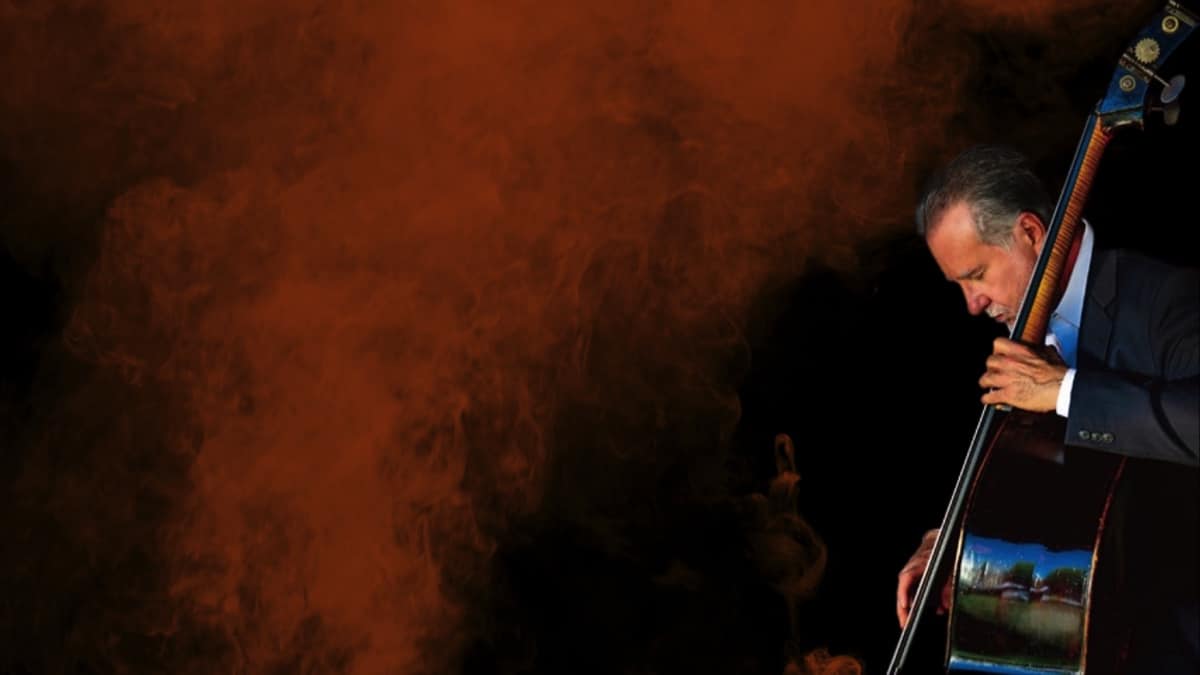
Brian Bromberg, Paying Tribute to Scott LaFaro, April 2024…

Brian Bromberg is one heavy-hitting bass player and I am in awe of his talent as one of the few individuals who is equally proficient on electric and upright bass.
You might remember our conversation back in 2018 when he released his powerhouse Funk album. Brian’s “A Little Driving Music” album is a staple on all our road trips and his Jaco and Jimi Hendrix tribute albums are mind-blowing… and I could go on and on.
Now, Brian has taken on the arduous task of producing an album paying tribute to the late, great, Scott LaFaro. He teamed up with pianist Tom Zink and drummer Charles Ruggiero and Brian delivers a commanding performance on upright. The entire album is a masterpiece and a real treat to listen to track after track.
Join us as Brian shares the details behind this project and more.
Photo, Michel Bocandé
Featured Videos
Visit Online
brianbromberg.net
FB @BrianBrombergBassist
YouTube
Cover
Leland Sklar, Over Half a Century of Bass, March 2024
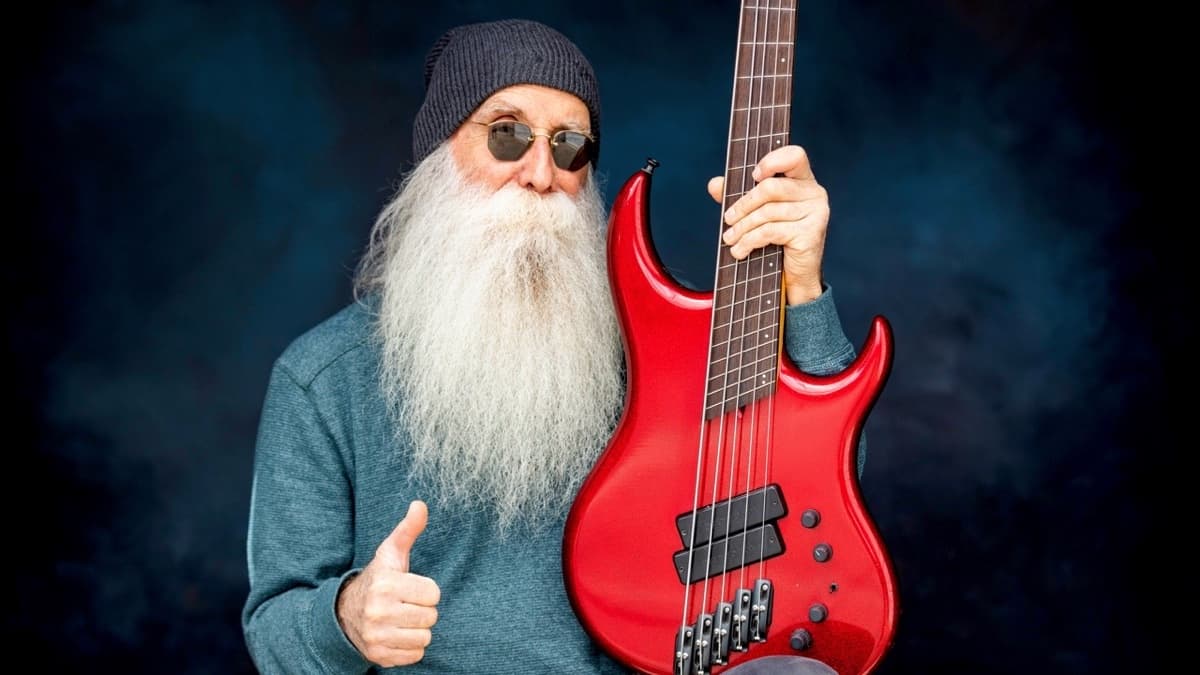
We all have enjoyed Leland Sklar’s Bass lines for over half a century.

You might remember that we had him on our cover back in 2017 and did an update when he launched his book “Everybody Loves Me” in 2020. It was exciting to hear that The Immediate Family had got back together in the studio to work on their own music in 2019 and are now up to two albums.
Just last December, Magnolia Pictures released a documentary titled “Immediate Family” where we got a behind-the-scenes look at the massive contributions Danny Kortchmar, Waddy Wachtel, Ross Kunckle, Leland Sklar and Steve Postell have made in countless songs that are the very essence of our daily personal musical soundtracks. Seeing the astronomical roster of performers they have supported over many years is very eye-opening. It is a must-see for any music lover!
Now, I am thrilled to bring you a special chat with Leland Sklar where we go more in-depth into the bass side of his musical journey.
Photos: Header, Rob Shanahan – Cover Photo, Jay Gilbert/Chris Schmitt
Featured Videos:
Skin In the Game – https://www.youtube.com/watch?v=QhbnzIrdjJ8
from new album Skin In The Game
The Toughest Girl In Town – https://www.youtube.com/watch?v=UVQLZIRfLjU
from new album Skin In The Game
Fair Warning – https://www.youtube.com/watch?v=1DN18DYwLsU –
from the self-titled album The Immediate Family
Visit Online
www.immediatefamilyband.com/
www.facebook.com/TheImmedFamily
www.instagram.com/theimmedfamily/
Bass Videos
Ricky Phillips, STYX Bass And More – February 2024
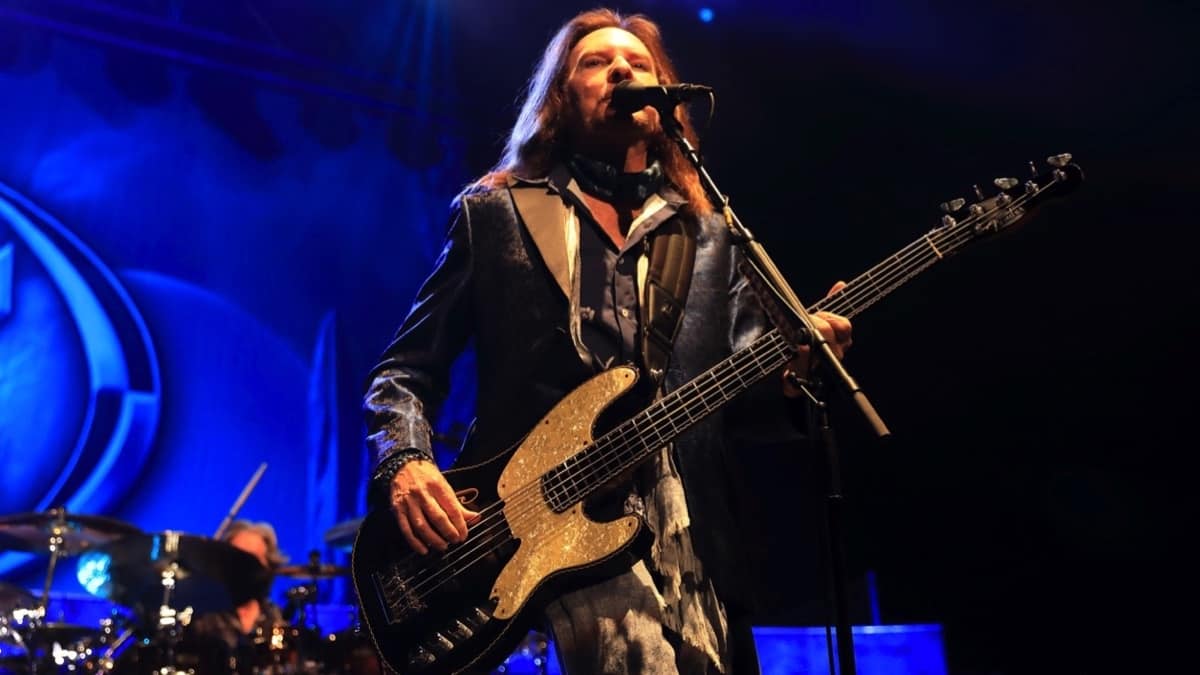
Ricky Phillips, STYX Bass And More…

I have always been a huge Styx fan. Their music kept me awake during countless nights studying and gave my imagination a place to escape when I had a moment to take a break.
I had the immense opportunity to chat with STYX bassist Ricky Phillips for our August Cover in 2017 and follow his projects as time passed. Now, I am thrilled to have the opportunity to catch up with Ricky as he has been super-busy over the past six years.
Join me as we take a deep dive into the band’s most recent album “Crash the Crown” and EP “The Same Stardust”. Ricky shares some insights into the herculean team effort behind the scenes and the musical process that keeps them ever so busy and how he has updated his sound.
Without further ado… Here is Ricky Phillips!
Photo: Jason Powell
Featured Videos:
“Crash of the Crown” lyric video
“Reveries” lyric video
“Save Us From Ourselves” lyric video
“Sound the Alarm” lyric video
“Too Much Time On My Hands” Zoom video 2020
Visit online:
www.Styxworld.com
FB & IG @styxtheband
Bass Videos
Jeff Pilson, Foreigner Low End – January 2024
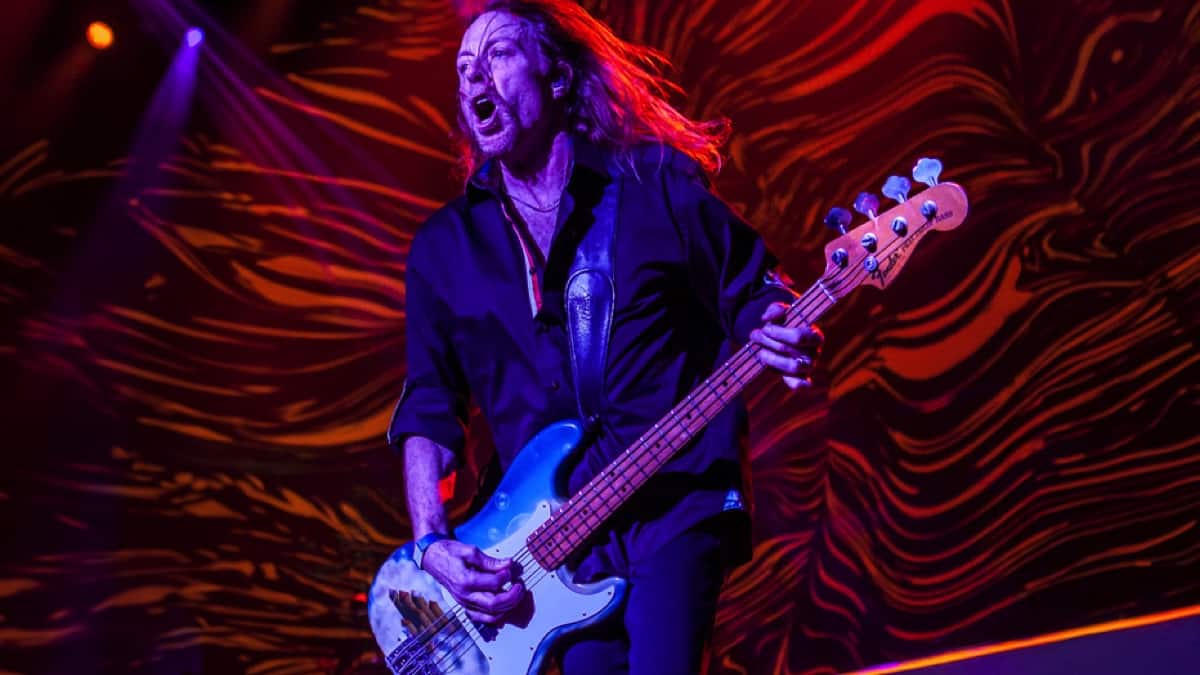
Jeff Pilson, Foreigner Low End – January 2024…

Those of us who were around back in the 70’s remember how certain songs on the radio resonated with us. It turns out that many of these iconic melodies came from Foreigner and they were part of our personal soundtracks!
After all these years, the band is going as strong as ever with Jeff Pilson firing away on bass midstream into a 2-year farewell tour.
I am excited to be able to bring you all the details about Jeff’s musical Journey, the farewell tour in progress, how he gets his sound and his plans for the future.
Cover Photo: Krishta Abruzziini / Video Photos: Krishta Abruzzini, Karsten Staiger, Gina Hyams
Featured Videos
For more news on FOREIGNER and upcoming Farewell Tour dates, fans can visit:
foreigneronline.com
facebook.com/Foreigner
twitter.com/ForeignerMusic
instagram.com/foreignerlive
youtube.com/user/FWebTeam
Also on FB @officialjeffpilson
Bass Videos
Rodney O’Quinn, Rockin’ Hard Through the Years – December 2023
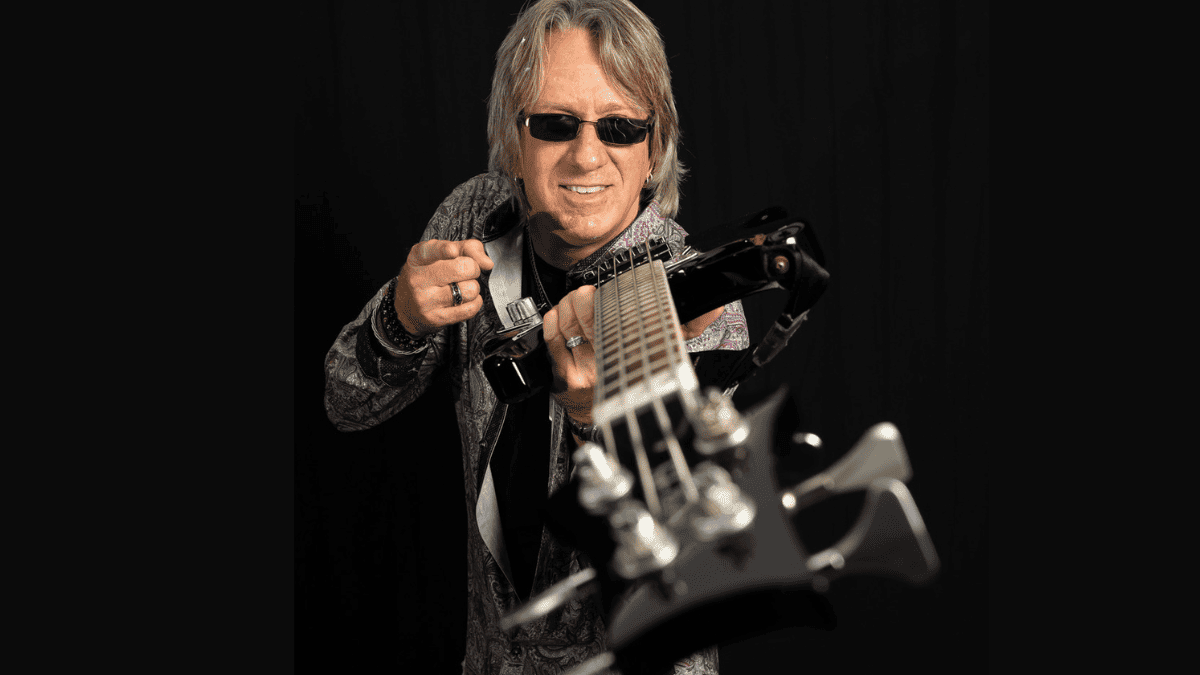
Interview With Foghat Bassist Rodney O’Quinn…

Many rock fans have enjoyed music by Foghat, who originally formed in London back in 1971.
Over the many decades of playing, the band members have changed, leaving behind only Roger Earl as the only original member. Bassist Rodney O’Quinn left the Pat Travers Band and joined the group in 2015 and has been laying down the low end for this iconic quartet keeping the Foghat legacy alive. With a new album titled “Sonic Mojo” which dropped on November 10th, the band is as busy as ever and there is lots of very tasty music to come.
Join me as we learn of Rodney O’Quinn’s musical journey, how he gets his sound, and his plans for the future.
Photos:
Cover, Jake Coughlin
Video Thumbnail, Tom Apathy
Photos used in the video: Kerry Quinn, Chuck Lanza, Kim Granger, Kenneth Strohm, Jake Coughlin, Jay Jylika
Featured Videos:
1st Single from Sonic Mojo – Official “Drivin’ On”
2nd Single from Sonic Mojo – “She’s a Little Bit of Everything Official Video
“Road Fever”- California Mid State Fair – Paso Robles, CA – 7-27-22
“Stone Blue” – Rodney O’Quinn Bass/Lead Vocals – Don Odell’s Legends – Woonsocket, R.I – 10/15/22 – The Stadium Theater
The Earl’s Court – Season 2, Episode 7: Funny Guys
“I Just Want to Make Love to You” – CasinoRama – 6-9-23
FOGHAT “Somebody’s Been Sleepin’ in My Bed” – Mohegan Sun, Uncasville, CT – 1/28/22
“I Just Want to Make Love to You” – California Mid State Fair – Paso Robles, CA – 7-27-22
Visit Online:
www.foghat.com
www.facebook.com/Foghat
www.twitter.com/FOGHAT
www.instagram.com/foghat_official
www.youtube.com/user/FOGHATMUSIC




















